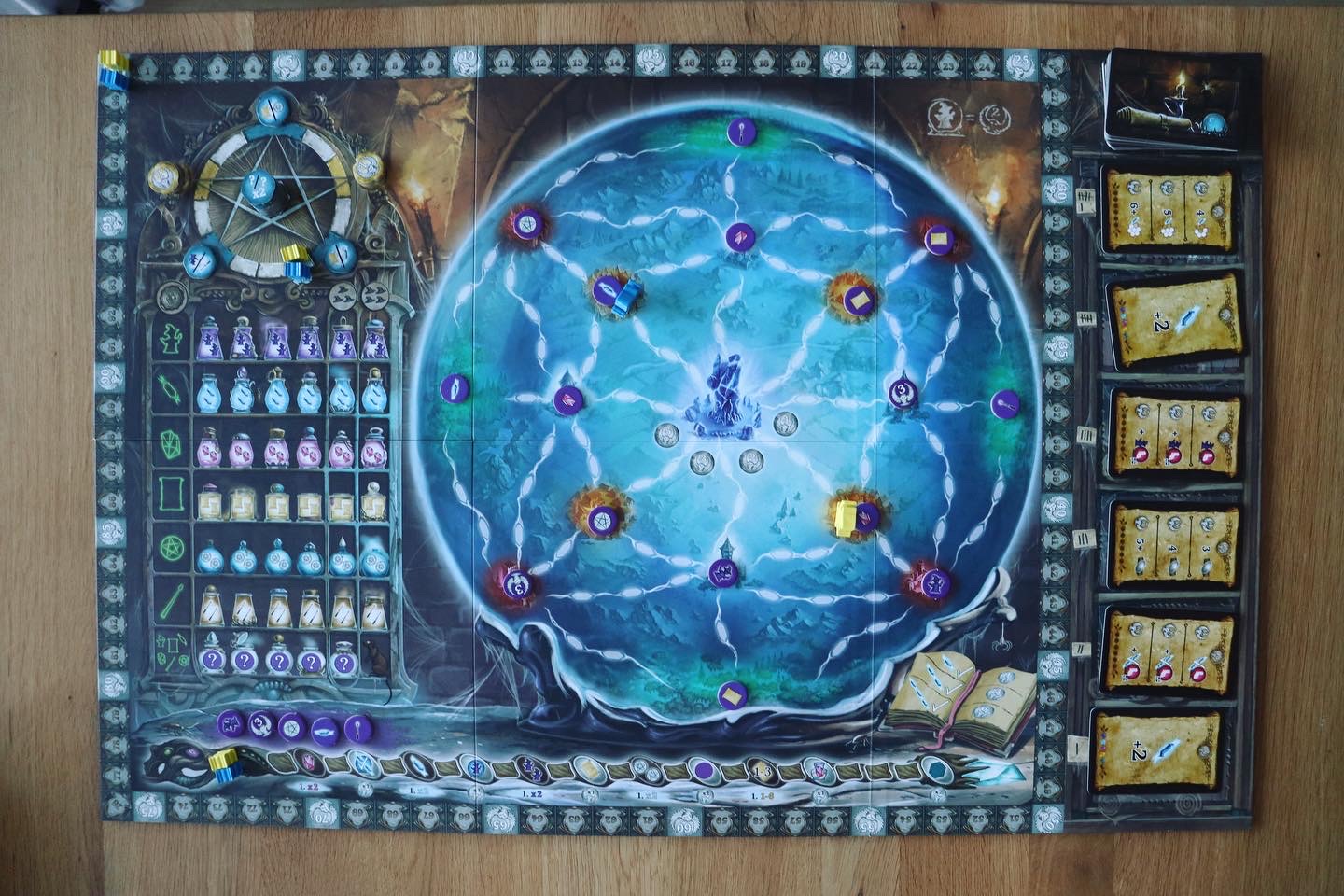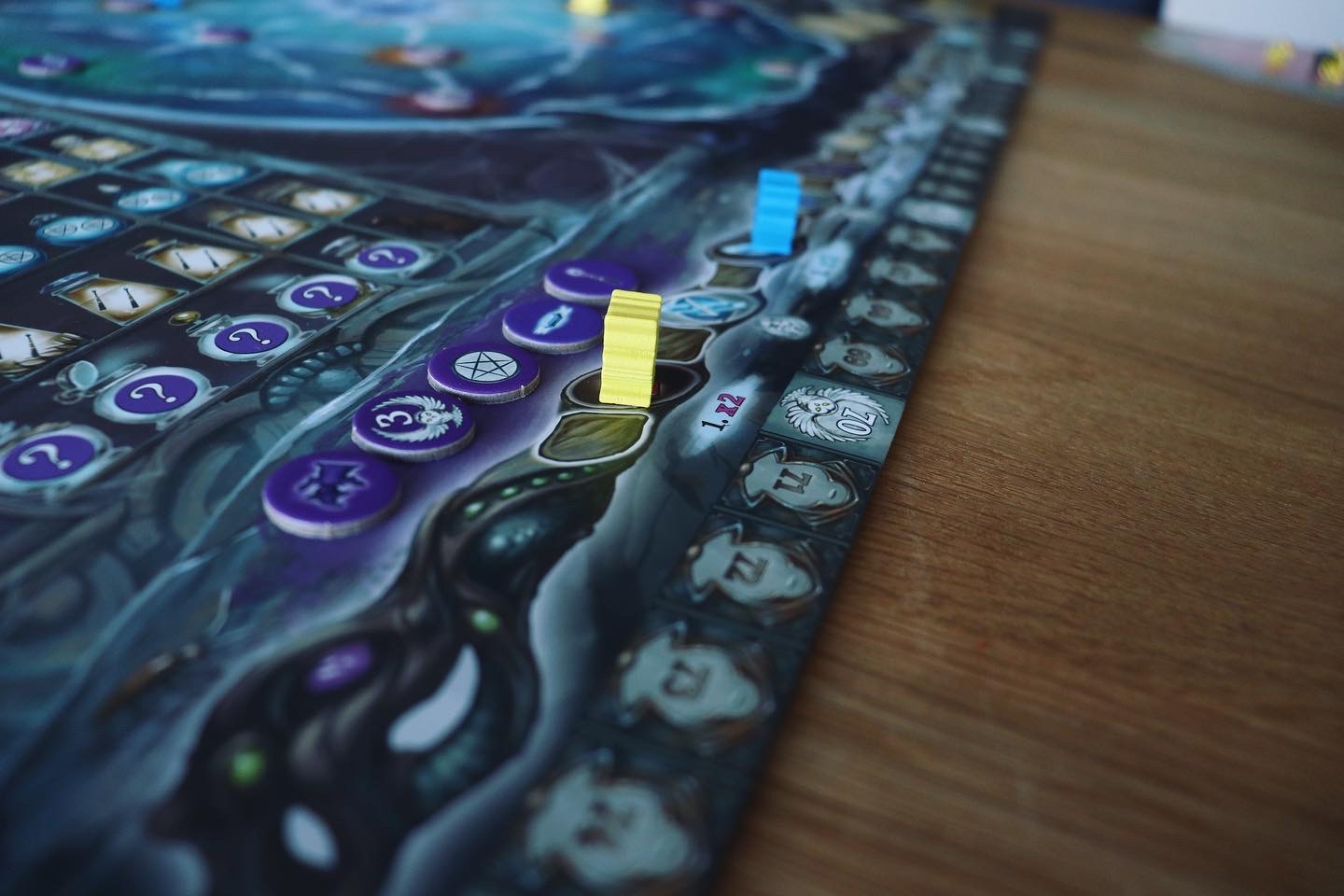Theme party incoming! Whether it was a children’s party as a child, some house party in your student days or during the annual and biggest costume party in the Netherlands, carnival, you always see one walking around. Dressed up or not. Witches. In Witchstone from 999 games, you step into the shoes of a witch (or wizard) to be appointed Master of the Witchstone. Double, double toil and trouble; Fire burn and may your victory bubble.

First the box, because there is a lot in there for each player: twenty energy units, eleven small witches and wizards, one large witch, fifteen witch tokens, seven crystals (one black and six of your own colour), one animal token, three score tokens, one position token, a vision screen and a very large cauldron. In the cauldron, the black crystal is placed in the middle, the other six around it. Furthermore, five witch tokens are placed face-up, but closed off from the opponents’ hawk eyes by the vision screen. The score tokens must be placed on the score track, the pentagram and the magic wand. Have fun playing!
No, I will take a shot at teaching you the tricks of the (witch’s) trade. There is quite a bit of work involved when it comes to the game board so pay attention. On the top left, two stacks of owl tokens (there are some) should be placed, increasing from three to seven and with the seven on top. On the top right, the pile of parchment scrolls (I hear you thinking) will be placed and six of them open to the bottom. The special witch tokens (are they different from the ones I already have?) should end up with the owl tokens in the pentagram, one pile in the middle and three loose ones in the appropriate places. Then, the magic tokens (this is where it stops, right?) are placed face-up in the designated spots in the crystal ball and what remains goes under the bottle rack. You know, that place where your far too drunk uncle can often be found during a birthday party. Finally, put the big witch on one of the four towers (immediately two points: win!) and put the overview card next to the game board.
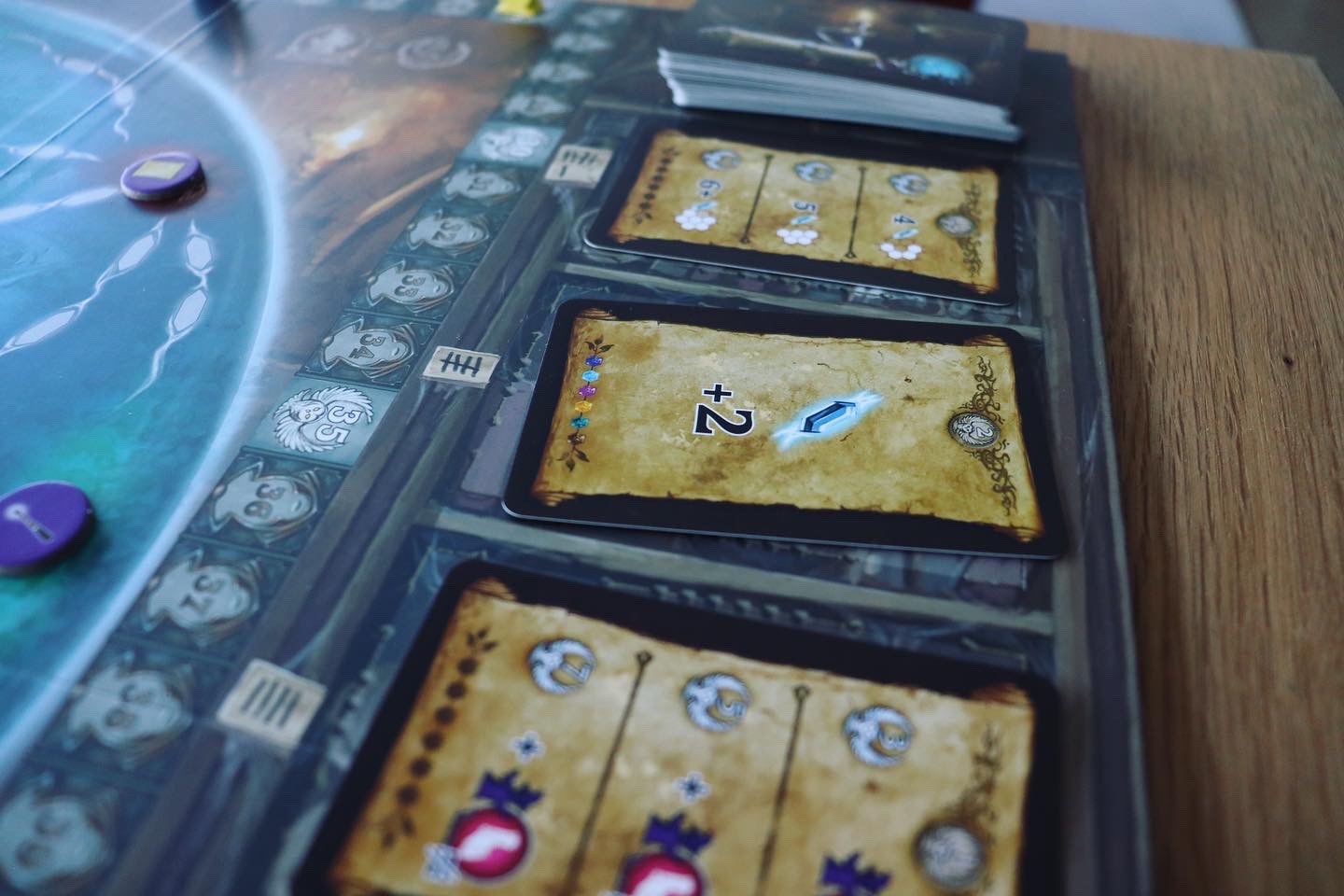
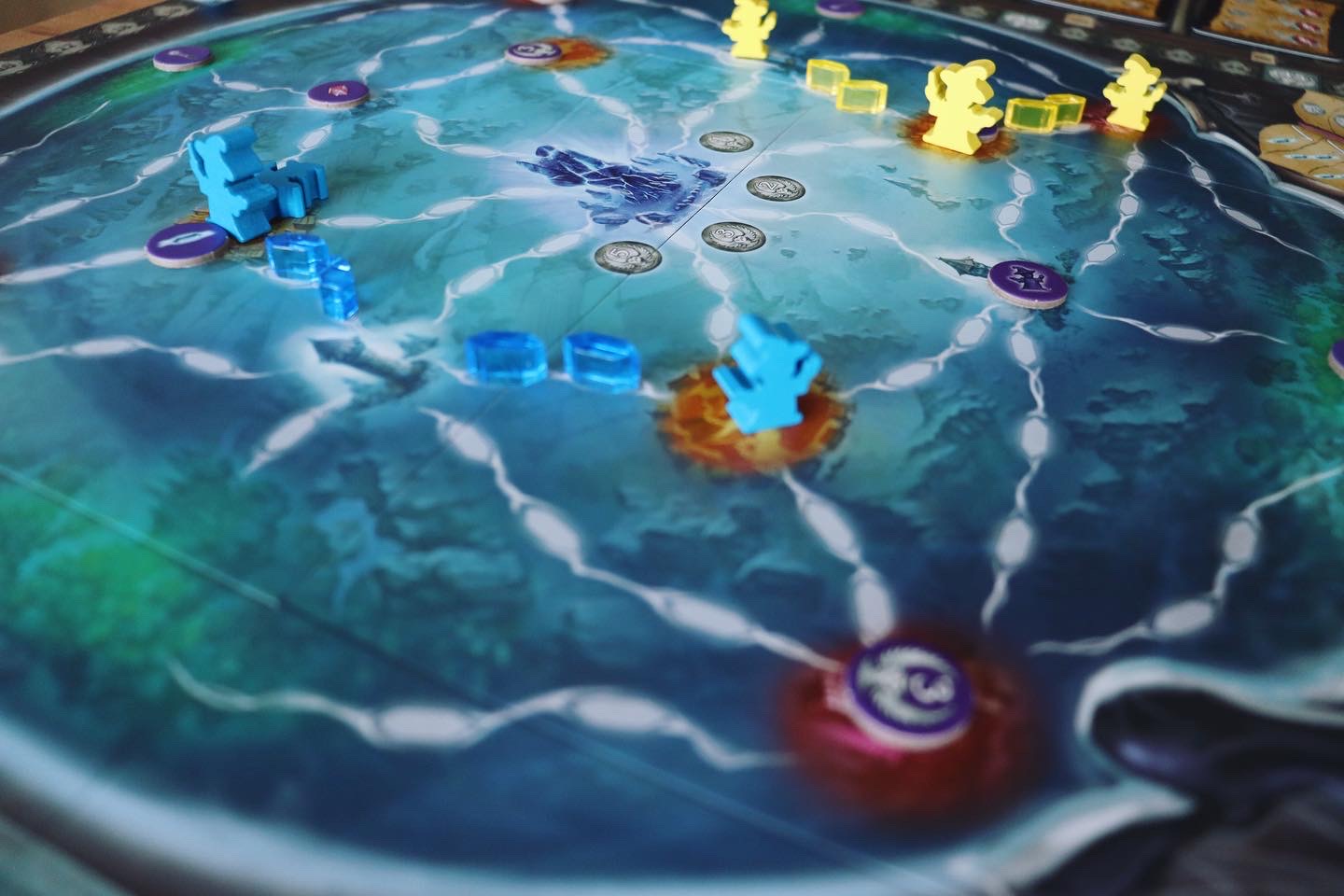

Above all, don’t be put off by the amount of ornaments, chips and other playing pieces. The best is yet to come! To keep your attention here is a comparison: if you explain Wingspan, a game that really everyone likes, in this way, you might also fly out of the room out of fear.
How it works. On a player’s turn, he places a witch token in his cauldron. The witch tokens show symbols corresponding to the six symbols in the cauldron. Each symbol equals an action so when placing one token you may always perform two actions. In addition, if you place a symbol right next to the same symbol, in that case you may perform that action again. More combos = more actions. After placing and performing the actions, you place a new witch token so that there are five again. If this is no longer possible, you are in the last round. After the last round, we will see who has the most points and can rightfully, probably incredibly proud and a tad arrogant, call himself Master of the Witchstone.
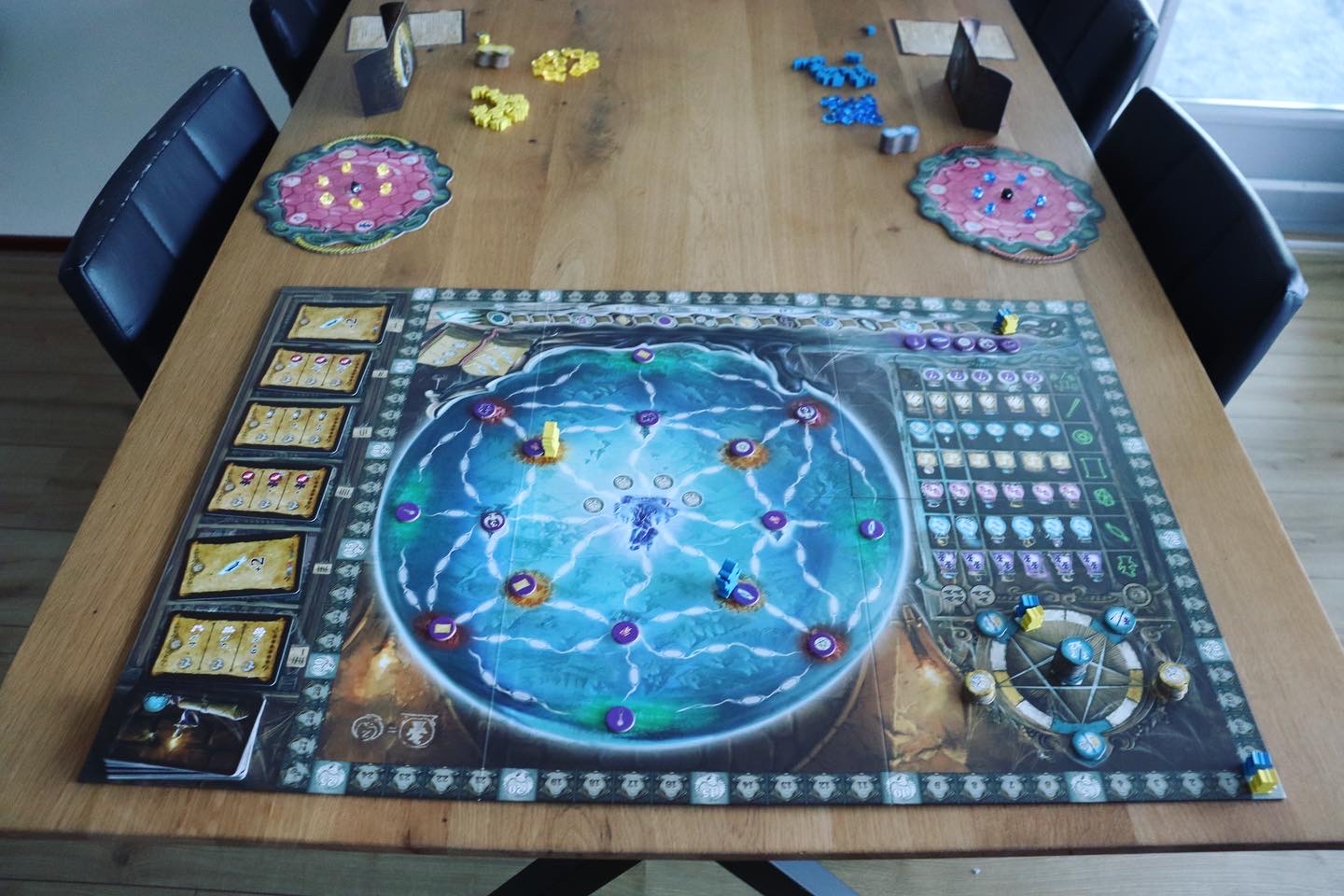
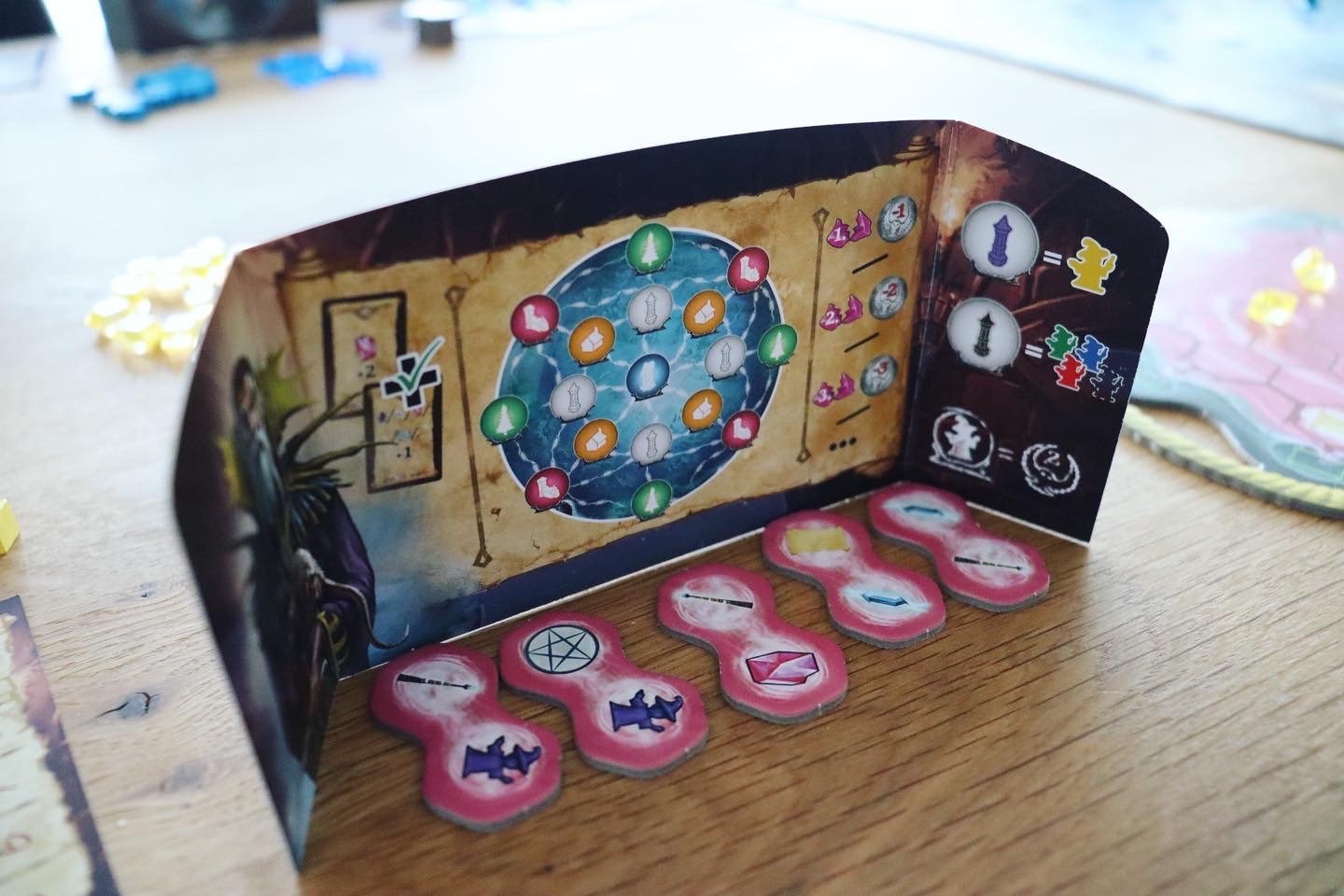

The actions:
- Pentagram action: on the pentagram you take steps. If you come to a token with two symbols, you can use one of the two actions immediately or permanently by placing the token in your cauldron. Arrive at an owl token? Instant points!
- Energy action: from your tower, create energy lines for 1, 3 or 6 points.
- Witch action: place a witch from your supply next to your tower or move a witch that is already there to another location (always 2 points) where you can reach your or someone else’s energy lines. If you end up with a symbol perform the action (even more combos!), if you end up at the witchstone in the middle put your witch on the free points circle and if you end up with an owl token you get the points.
- Crystal action: move the crystals in your cauldron to create more space for witch tokens and to collect bonuses as you work crystals outwards. The black crystal counts twice! Once you have worked crystals outwards, place them in the bottle rack by the corresponding symbol.
- Wand action: every time this action is used, the little witch moves one step on the wand. The bonus shown in the boxes is for everyone, but the one furthest in front gets some extras, such as doubling the bonus.
- Parchment action: you take a parchment scroll from the supply and perform the action (= reinforcement spell) or you keep the card because it can earn you points at the end of the game (= prediction).
A lot of information, I understand, and it might also take some getting used to because of the many rules, but it’s worth it in the end. If you like Clever-like games because you go absolutely wild with infinite combos, Witchstone is really for you. Besides, the game is quite tactical as you can get points in different ways and you can thwart your opponent here and there which is always a nice feeling. Magical.
